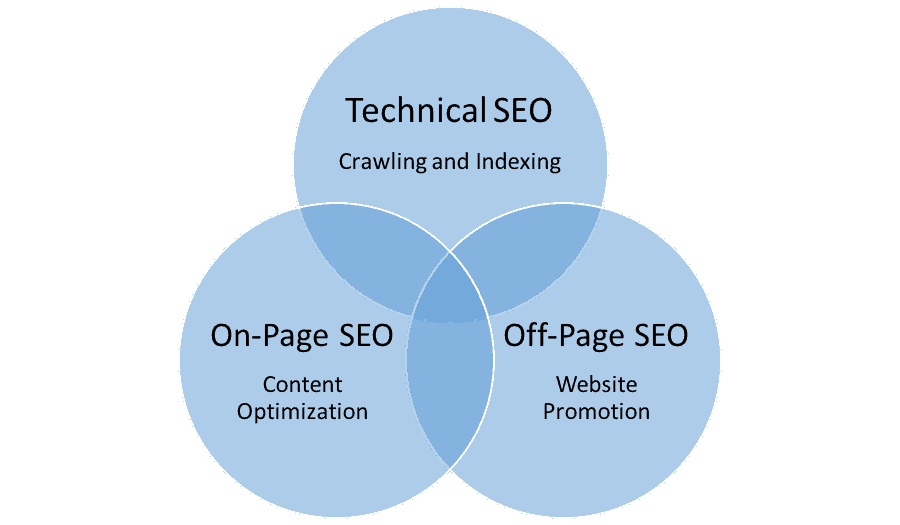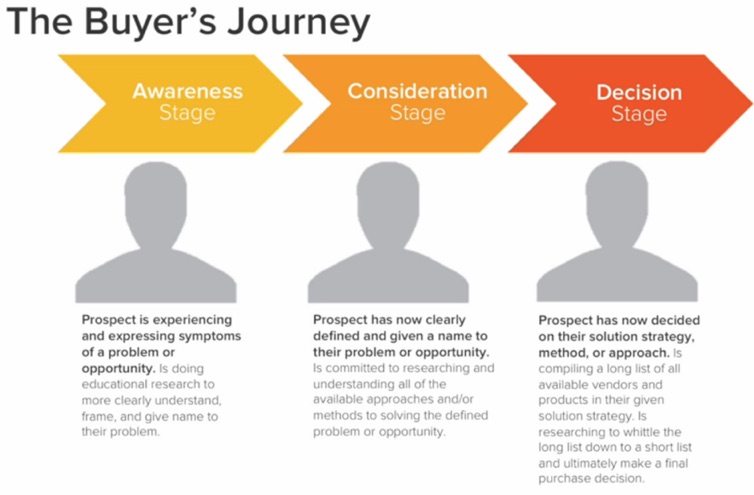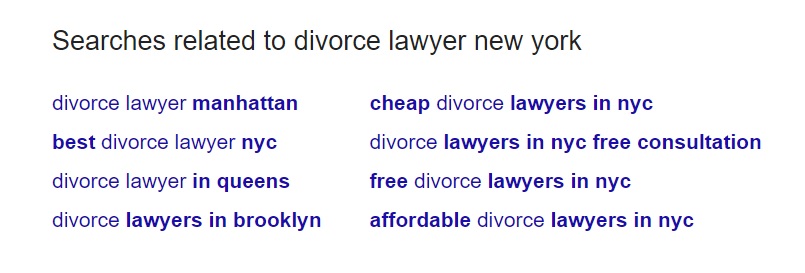SEO for a New Website: Your Ultimate Checklist

“Isn’t our website too small for SEO?”
“How can I do SEO for a new website that no one’s ever heard of?”
“Don’t I need a ton of money to do SEO for a new website?”
We get questions like these every day. And we always answer saying that:
- It’s never too early to start SEO
- No website is too small for SEO
- SEO doesn’t have to cost a fortune
- SEO for a new website is actually easier to do than for an older website.
When no one can find your website it’s the perfect time to start investing in SEO. For a small business with a small budget, Google AdWords or Facebook ads may be too expensive. But SEO isn’t.
Sure, it may take some time before you get results. However, when you do get them, they will be there to stay.
Let’s take a look at how to do SEO for a new website.
SEO for a New Website: Your Step by Step Guide
First things first: I know that it may be intimidating to start from scratch. So do yourself a favor and don’t start comparing your website to your competitors’ older ones. They had time to get there. SEO doesn’t happen overnight, but it will happen.
Your SEO strategy for a new website can be divided into three major categories:
 Image via Reliable Soft
Image via Reliable Soft
Let’s learn more about each of them, shall we?
-
Get Your Technical SEO Ducks in a Row
Before you start with any of the SEO steps for a new website below, you need to make sure that nothing works against you from the get-go. It’s quite easy to get engrossed in keyword research and forget about the basics.
Here’s what you need to focus on:
- Accessibility: your website should be available for users with any browser, any device and from anywhere in the world. Don’t forget mobile users! They make up most of your visitors.
- Crawlability: can crawlers get to any page of your website? Don’t worry, you don’t have to check manually. You can use tools like Screaming Frog or Google Search Console to perform a scan of your entire website.
- Speed: the loading speed of your website is an important ranking factor. Even more, it’s important for users not to wait forever until they can see a photo or even some text. Check your speed with various tools.
Not sure if your website is up to par? Let us find out for you! Our 72-hour report will tell you all you need to know about the performance of your WordPress and your content.
OK, that was the first step of setting up SEO for a new website. If your website passed with flying colors, it was also the easiest, since most of the tests are automatic. Sorry to say, but the rest of our SEO checklist for new websites won’t be such a walk in the park.
-
Create a Content Strategy
Your content strategy is the cornerstone of SEO success.
Most small business owners avoid creating a content strategy because they think they don’t have the resources for it. Instead, they prefer to ‘wing it’.
I’m not going to tell that creating a content strategy is easy. It’s not! Instead, I’m going to tell you that it’s one of those SEO strategies for new websites that you can’t afford to wing.
Let me put it this way: you don’t need to flood the internet with new content every day just to move up in SERPs. What you need to do is publish the right kind of content, even if it’s not every day (or every week, for that matter).
Why, you ask?
Well, as you may know, the internet is already flooded with bad content. Don’t add to that. Your clients aren’t searching for illegible, poor content with little value.
What they are searching for is authority content.
Content that speaks to their needs and solves their problems – that’s what you should be writing. And guess what?
It’s not just your customers that love great content. Search engines do, too.
In fact, you can think about it this way: if your customers like your content, Google is going to love it.
Here’s why: bounce rate and time spent on page are two metrics that Google use to rank websites. The longer a visitors stays on your page and the fewer visitors that bounce back to search results (indicating that they didn’t find what they were looking for on your page), the better your ranking.
Quite the win-win, wouldn’t you say?
This is what SEO for new and old websites alike should be all about: getting meaningful traffic that can be converted into sales, not millions of useless visitors.
Need content that both Google and your customers will love? This is what Idunn specializes in! Let’s talk about optimizing your website for search engines and sales!
OK, but how do you know what kind of content to create?
Glad you asked!
You might be tempted to jump into keyword research straight away. But you shouldn’t.
Search has changed and your SEO content needs to change along with it. Today, we need contextual optimization, the kind that is more about a topic than a keyword. So this is your first step: finding the right topics to write about.
The right topics lie at the intersection of:
- Your product
- Things that your potential customers typically search for.
I’m sure you’ve got the first one covered, so let’s head on to the second.
Typically, you want to focus your SEO content on the first two stages of the buyer journey, awareness and consideration.
 Image via HubSpot
Image via HubSpot
One of the best SEO tips for new websites is to make it relevant. Your SEO strategy should be focused on turning your brand-new website into a pit stop for everyone looking for information in your field. Gain their trust through authority content that solves their problems and you’ll be the first one on their mind when they are ready to buy.
Let’s say you’re writing SEO content for a new website of a divorce lawyer in New York. How do you find what people are searching for besides the obvious “divorce lawyer New York”.
The simplest, fastest and cheapest (since it’s 100% free) is to go to good ol’ Google and perform a search using your root keyword, the one mentioned above. Skip the results and go to the end of the page.
 The “related searches” section is a goldmine for your SEO strategy. Not only can you use each of the keywords listed there for a unique piece of content (or all of them together in a piece of content), but you can repeat the search for each of the results above.
The “related searches” section is a goldmine for your SEO strategy. Not only can you use each of the keywords listed there for a unique piece of content (or all of them together in a piece of content), but you can repeat the search for each of the results above.
This way, your SEO for a new website starts with an unbeatable list of keywords. Your content strategy is exactly what it should be: the answer to your potential customers’ questions.
Another way to come up with great topics is Yelp. Perform the same search there and take a look at the results.
Read the reviews carefully. They will tell you all that you need to know about your prospects’ pain points and even how to solve them. Focus on the 1-star reviews. Read people’s stories to find out which aspects of your products or services you should emphasize on.
 The review above is the ideal schema of an article for a brand new website looking to gain some SEO juice.
The review above is the ideal schema of an article for a brand new website looking to gain some SEO juice.
You can repeat this project whenever you feel like you’ve run out of ideas. You can also check out our blog post on tools to help you generate more blog titles for extra inspiration.
-
Start Writing
Knowing what to write about is only the first part of your SEO strategy for a new website. You may discover that your neatly organized spreadsheet with keywords and topics is quite challenging to put into practice.
Instead of dreading it, approach it in a 3-step manner.
Step 1: Choose the types of content you will publish. The perfect place to start is a company blog.
 Image via AdEspresso
Image via AdEspresso
Yes, blogging helps you get more traffic, more leads and it is the perfect way to boost the SEO of a new website.
But it can be so much more.
Your blog posts can be repurposed into countless other types of content (check out the top ten ways to repurpose content). Also, you can turn some of your posts into topic clusters or an e-book. The options are endless.
Step 2: Decide the frequency of your content. The key here is not to burden yourself. You don’t need to post a new blog post and three white papers every day.
Bite as much as you can chew. Remember that quality has to be more important than quantity. Content doesn’t have to become a commodity.
Only publish when you have something to say.
If you’re not sure that you can produce quality content and keep up with your schedule, it’s always better to ask for help that to squeeze in blog writing late at night. (Hintà our team of expert writers is just a click away!)
Got your schedule figured out in a realistic manner? Great! Now make sure you stick to it.
Publishing content regularly is the cornerstone of SEO for a new website. Search engines love it. And, more importantly, your potential customers love it.
Step 3: Promote your content.
SEO for a new website needs help. A lot of it.
It’s a common Catch-22 in SEO, especially after the recent Google algorithm updates: the more popular a website is, the more popular it will become. For example, if you write a blog post on the same topic a huge portal does, the latter will rank better.
It’s not discrimination.
It simply means that Google already knows that websites and that it recognizes it as an authority in the field.
Of course, you need to gain some ground.
So don’t leave your content all alone, expecting it to perform as if it were magical. Help it along its internet journey.
- Send newsletters
- Share on social media (more than once!)
- Contact the influencers you quoted in your posts and let them know. They might share the post themselves
- Go beyond social sharing (check out our top 10 ways to promote content outside social media)
-
Build an Audience
Remember the Catch-22 I mentioned above? When you set out to do SEO for a new website you have to be painfully aware of it.
Even the best evergreen content can start collecting dust if no one discovers it. So make sure the right people do.
Work to nurture an audience, a loyal following.
Two of the metrics that matter most in SEO for new and old websites alike are bounce rate and return visitors.
When a visitors bounces back to search results after spending a few seconds on your page, this tells Google that your page isn’t relevant for the query in question. If visitors spend minutes on your page and don’t bounce back to search results (or, better yet, visit some more pages of your websites once they got there), they tell Google that your page is relevant for the query in question and that it’s user-friendly.
Similarly, if you have a lot of visitors that come back to your website over and over again, this tells Google that your website is useful to them. So you’ll rank higher.
Thus, a loyal following may be the best thing that happens to your new website’s SEO strategy. Work to find your crowd, the people who resonate with your content, those who really need your content and those who enjoy it.
Invest in ads on social media to get your first articles seen. Don’t worry, you don’t have to spend a fortune – even a smidge of a budget is enough. As far as Facebook goes, the same SEO Catch-22 applies. The more popular a post (read: the more engagement it got), the more popular it will become.
So get the ball rolling with a few dollars that get you the first likes and shares. Then watch your article become the internet’s new sensation.
Send out newsletters with the content you just published online. But be careful not to spam the people on your list. Make sure you segment it properly, so the right content gets to the right people.
Write guest posts on websites with a higher DA. This won’t just attract readers to your own website, but also give you that awesome link juice that matters more than anything in SEO for a new website.
Start conversations on social media or websites like Quora. Be helpful, give advice, go in-depth with your explanations and only after that link to your latest blog post. Again, don’t be a spammer. It will get you kicked out of any online forum.
SEO for a New Website – Wrapping Things Up
Instead of obsessing over how much you have to work to match your competitors’ older websites, look at your brand new one as a blank canvas. It’s a world of possibilities.
It’s your oyster. It’s 100% potential.
Your competitors have already made SEO mistakes. You haven’t.
You can do everything right from the very beginning, instead of having to fix legacy issues.
And if you play your cards right, the results will start pouring in faster than you expected.
The last key piece of advice: write for humans, not search engines. This is how SEO for a new website is done today. If your human readers love your website and your content, so will Google bots.



1 Comentariu la “SEO for a New Website: Your Ultimate Checklist”
Great topic, surely new bloggers will learn SEO from this article.